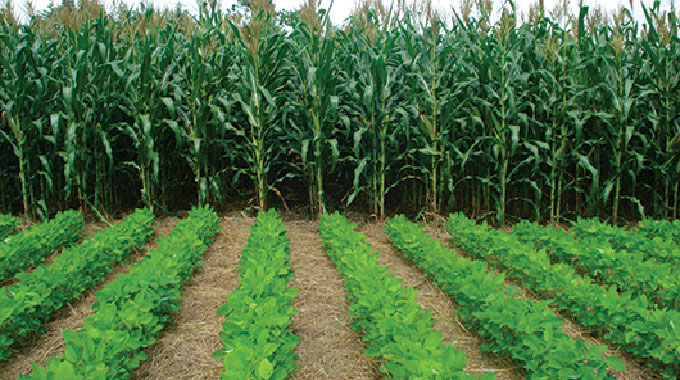Letters to the Editor: Zimbabwe should embrace modern farming

Beaven Dhliwayo, Harare Bureau
Information Communication Technologies (ICT) can revolutionise the Zimbabwean farming sector and benefit farmers, including small landholders.
Agriculture is the most important sector, with the majority of the rural population in developing countries depending on it.
The traditional approaches of agriculture being adapted, has numerous challenges in terms of production, marketing, and profit, among others.
The challenges of traditional agriculture are addressed significantly by using ICT that can play an important role in uplifting the livelihoods of the rural small landholder farmers.
ICT helps in growing demand for new approaches. It also helps in empowering the rural people by providing better access to natural resources, improved agricultural technologies, effective production strategies, markets, banking and financial services.
Recently, President Mnangagwa said farmers should embrace new farming technologies to improve productivity and reduce the country’s dependence on imports.
“As a farmer, I want to embrace technology for the betterment of production,” he said. “For example, as a farmer, I continuously interrogate the latest technology in agriculture to mechanise and modernise our agriculture.
“Our farmers at every level, the small (scale) farmer, the medium (scale) farmer and the commercial farmer, the big farmer; we should not be content with how we entered agriculture; we must continuously seek to improve productivity on our land.”
True to President Mnangagwa’s sentiments, Zimbabwe has a lot to learn from other agricultural projects across the world, particularly in countries like India, Uganda, Kenya, Ghana and Bolivia, which have embraced ICT.
For instance, mobile technology is increasingly being used to improve smallholder farming across Kenya, as it holds considerable potential to improve operations, reduce weather-related and postharvest losses, and offers an efficient and transparent means to distribute millions of tonnes of state-subsidised equipment and supplies.
Both public and private entities have moved to roll out mobile platforms for the industry.
Although wide-scale adoption is constrained by limited resources and lack of awareness, early successes elsewhere indicate that these programmes could have a dramatic impact on output and incomes.
Also in May 2015, Vodafone announced plans to introduce its Farmer’s Club initiative in Kenya, following a successful launch in Turkey in 2009.
The Turkish programme has helped nearly 1,2 million farmers improve efficiency and boost both crop yields and farm-gate incomes over the past six years, and there are plans to introduce it in Ghana, Tanzania and India, eventually offering mobile services that include early warning for weather events, information on ideal planting and harvesting times, mobile financial services, and a virtual marketplace where farmers can sell produce.
Through ICTs, Kenyan state allocations to the Fertiliser and Seed Fund fell from KSh4,5 billion ($49,5 million) in fiscal year 2014/15 to KSh3 billion ($33 million) in 2015/16 and will remain flat until 2017/18, making efficient delivery of subsidised inputs critical.
Tech-based schemes will help stabilise fertiliser prices and shield farmers from seasonal price fluctuations and food insecurity.
Zimbabwe is facing a problem where the population is growing, whereas farm output is increasingly falling.
This is often due to factors like weather changes and migration from rural to urban areas, meaning that there are fewer young people to work on the land.
Government has been using many policies to improve this situation, but greater change is required to ensure that local food supply is secure.
Most communities in the country still use old farming implements like hoes and cutlasses.
Meanwhile, the few that would try to access new technologies face challenges with financing issues.
Entrepreneurs in the country are now expressing an interest in how farmers work and how they can be helped to increase agricultural output.
With financing sorted out, Zimbabwean farmers, both small-scale and commercial will have the opportunity to grow their farm yields and businesses.
Examples of the kinds of digital technologies that have made it into Africa include satellites and drones, weather forecasts and soil sensors.
In other African countries that are embracing ICTs in agriculture, automated systems have also been installed to warn farmers beforehand of changes in weather patterns, by examining soil temperature and nutrients.
Embracing ICTs helps farmers use the right fertilisers and pesticides, and irrigate their fields at the right pace.
Other available technologies include drip-irrigation sets that allow a few droplets of water to constantly irrigate the crops using solar energy to power the entire system.
These reduce water losses during regular irrigation, thus protecting a scarce natural resource.
These technologies, and many more are becoming more accessible to African farmers, and have confirmed increase in productivity.
Additionally, major global corporations are trying to advance the digitalisation of African agriculture by launching payment schemes, credit platforms and digital insurance.
These allow farmers to handle their earnings better, to improve standards of living for themselves and their families.
ICT in agriculture should also utilise the youths who are tech savvy, thus creating opportunities for them as there are mostly unemployed, but have the brains to better the country.
Without them, the brain drain problem – alongside the migration crisis – will continue to sap the country’s strength at a time of critical challenges in places where innovation is needed most.
Yet for young Zimbabweans, seeking opportunity in the tech sector, working in agriculture will become intertwined with sophisticated weather forecasting and messaging, unmanned aerial monitoring and fintech service.
That means a significant number of jobs in agriculture tied to tech will be available.
“The entrepreneurial spirit of Africa’s youths visible in many parts of the continent reflects how Africa is becoming innovative in finding locally relevant solutions to daily challenges in agriculture, health and education,” the Byte by Byte authors note.
Case studies from Ghana, Rwanda and elsewhere illustrate the tech advances under way.
In Kenya, the FarmDrive start-up is an example of how data-driven assessments are used to make it easier for creditworthy farmers to get much-needed loans.
In the four years FarmDrive has been up and running – through October 2018 – more than $300 000 in loans has been made available to smallholder farmers.
At least 37 percent of those farmers were young Kenyans eager to benefit from technology.
In Zimbabwe, electricity, infrastructure and policy development remains a challenge, but nurturing the culture of entrepreneurship will be key to success in the agricultural sector.
That is why it is vital for the country to invest in education that will ensure digital literacy for youths, and the innovation hubs that will support research and development to empower farmers that Zimbabwe is depending on to feed its future.
Zimbabwe seeks to achieve an upper-middle-income status by 2030, hence the transformation of agriculture into a productive, high value, market oriented sector, and with forward linkages to other sectors should be one of the important pillars to achieve the vision.











Comments